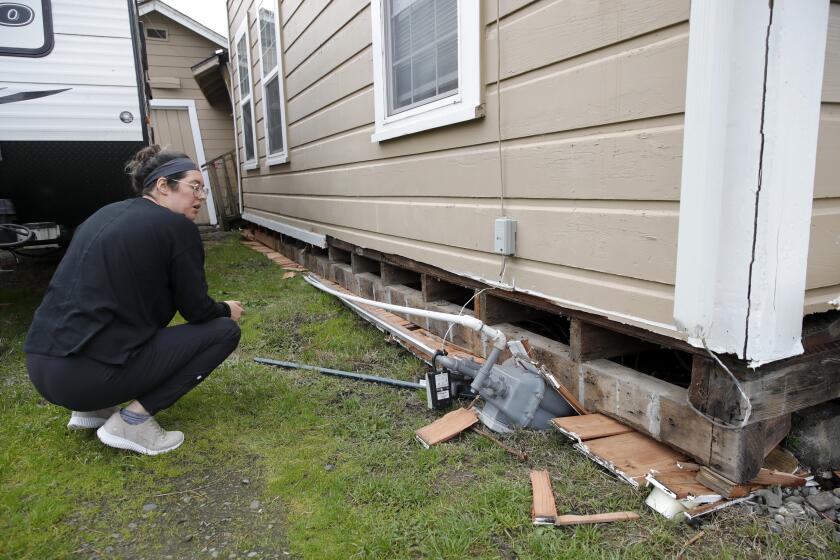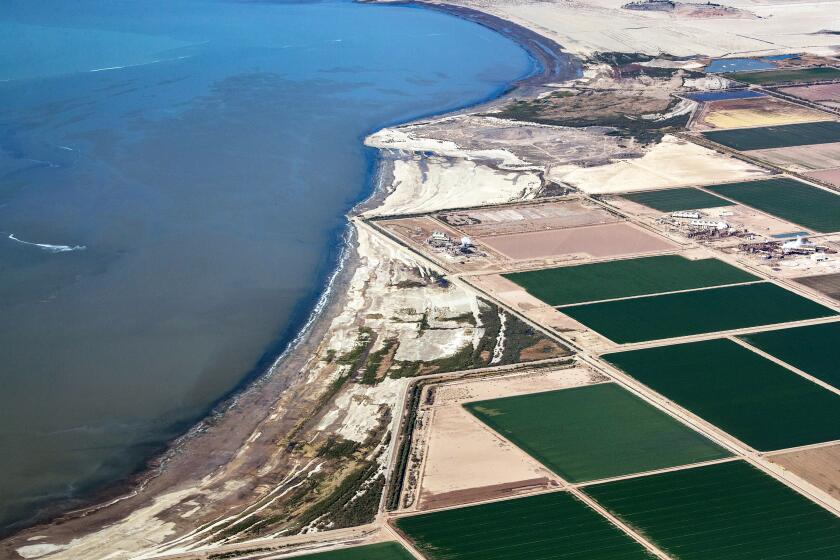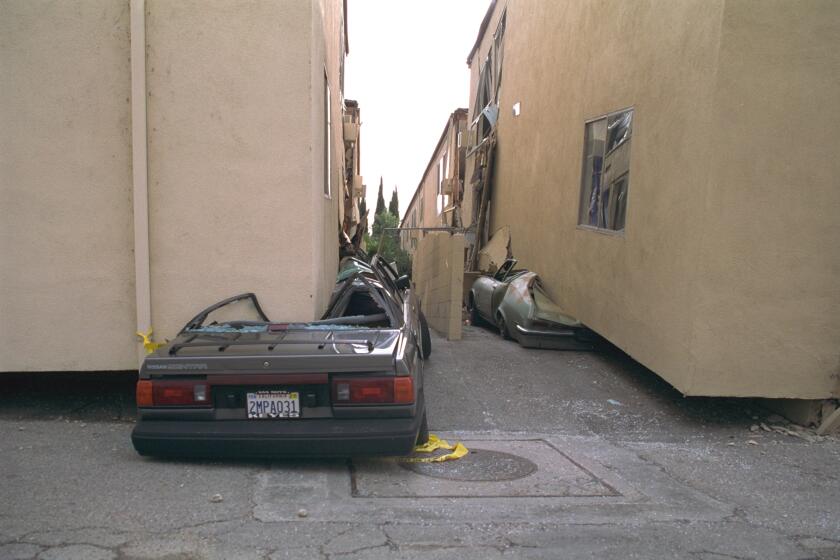Unshaken: Is your fire extinguisher ready? How to make sure
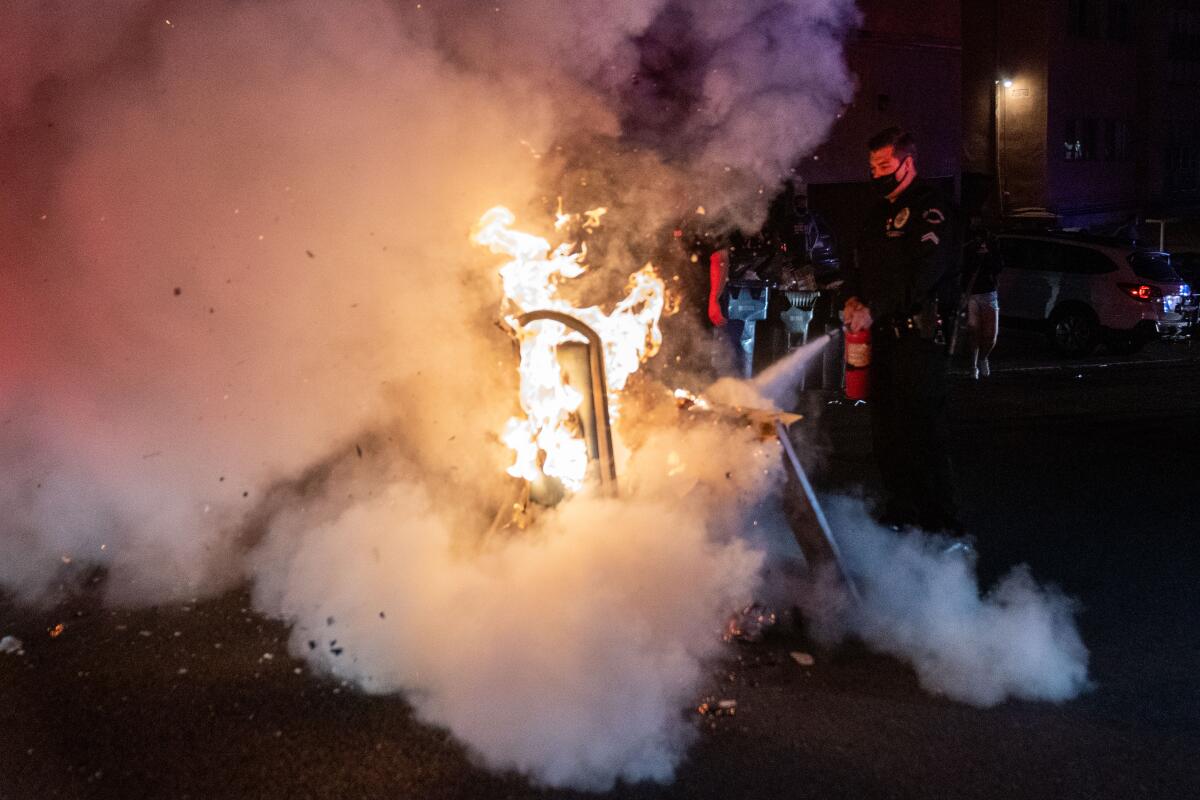
Hello, Unshaken readers. It’s been two years since we launched this newsletter and the Unshaken hub of earthquake readiness and resilience information. Thankfully, we haven’t had a major earthquake in Southern California in that time. But we know one is coming someday.
That’s why preparation is key, and not just for our peace of mind. It also helps ensure that when the shaking is over, we’ll be able to handle the emergencies that inevitably result, and then begin the work of recovering and rebuilding this place we love.
Last week, my colleague Jon Healey told you about California’s Earthquake Brace + Bolt program, which offers a sizable rebate to help you to shore up your home’s foundation. A home shaking off its foundation can be catastrophic.
So can a fire that follows a quake. So this week, I want to talk to you about fire extinguishers.
Something I added to my home after working on Unshaken is a pair of small First Alert fire extinguishers. Maybe you got one too.
If you bought it and forgot it, though, here are a couple of reminders from Margaret Stewart, a Los Angeles Fire Department spokesperson.
- Now that you have a fire extinguisher, make sure it’s accessible. Don’t stick it under the sink behind the cleaners and buckets and who knows what else. Most fire extinguishers you buy will come with a wall mount, but as Stewart conceded, “You may not want a fire extinguisher mounted on your wall” for all to see. So if you’re putting it under your sink, consider mounting it on the inside of the cupboard door.
- Also make sure you know how to use it. An easy mnemonic is PASS, Stewart said: “P” is for “pull” the safety pin on the extinguisher; “A” is for “aim” the nozzle or horn at the base of the fire; the first “S” is for “squeeze” the handle; the second “S” is for “sweep” the spray back and forth across the base of the fire until it’s out. The LAFD offers an emergency preparation booklet — Page 14 of that PDF is about house fires and has a diagram explaining PASS. Print it out and review it with your family.
Homes with raised foundations can be susceptible to serious damage in an earthquake. California’s Earthquake Brace + Bolt program can help pay for seismic retrofits.
Inspecting your fire extinguisher
Something I didn’t know before I bought my fire extinguishers was that they need to be regularly inspected — and sometimes serviced.
Inspecting your fire extinguisher is easy. First Alert recommends checking the gauge on your device weekly. I decided once a month was enough for me, so I set a monthly reminder on my phone: “Inspect fire extinguishers.” I look at the gauge on the top of my two extinguishers, and if the reading is in the green, I can get on with my day.
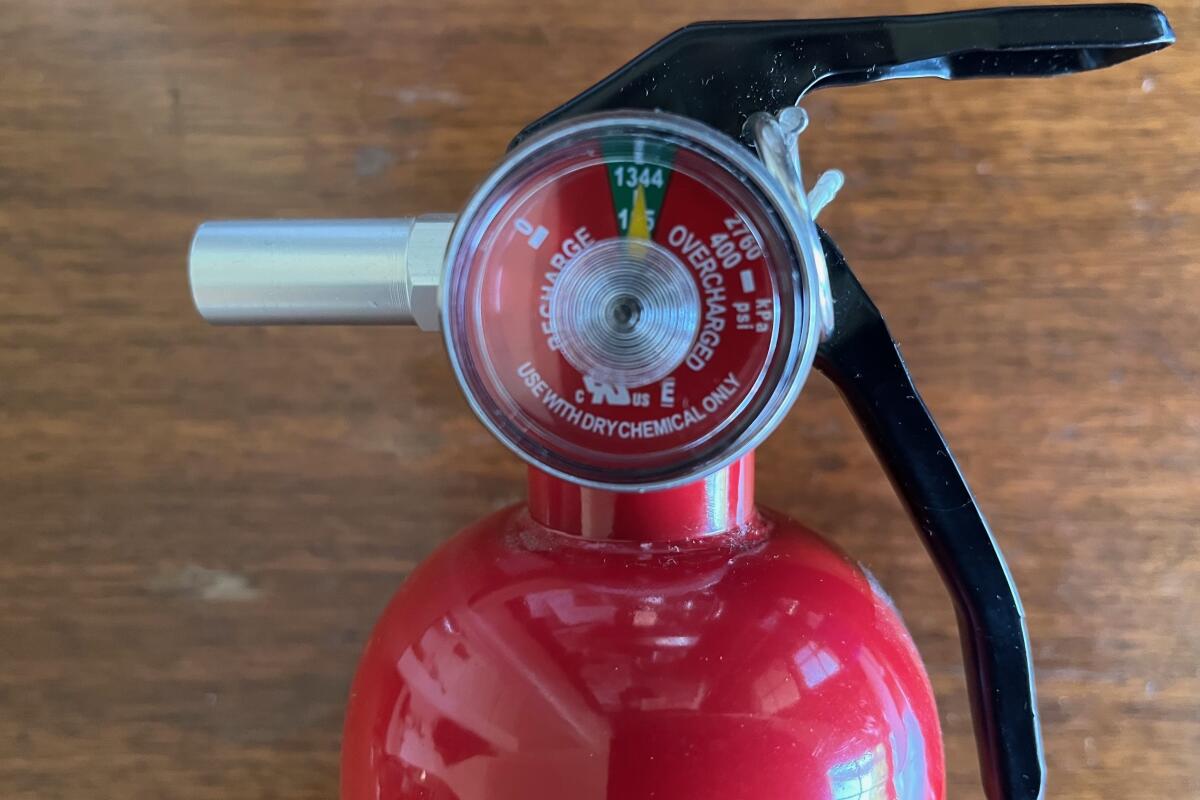
The extinguisher manual also says to make sure there are no obstructions in the nozzle and that the safety pin is still attached. Check and check.
But if the gauge has dropped into the red, that’s where things get tricky.
Your kits, your home, your family, your finances: You’ve put in the work to secure them. Now stick to it, and make sure everything is up to date.
Servicing your fire extinguisher
That’s where I found myself recently — gauge in the red.
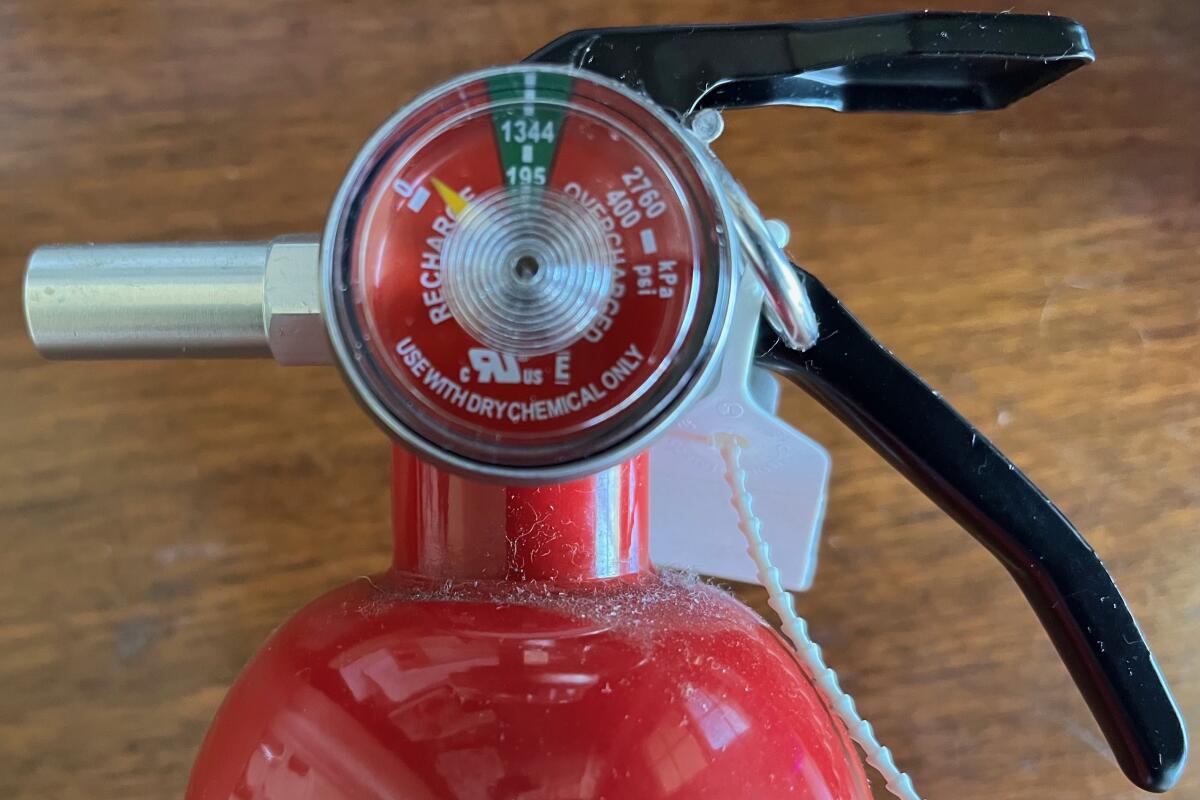
Great. Now what?
The First Alert manual recommends consulting a local telephone directory to find “a certified fire equipment dealer.” So with that guidance, I set off to search the web.
But here’s the thing about “certified fire equipment dealers” — they don’t sustain their businesses by recharging 2.5-pound residential fire extinguishers. The bulk of their work is installing and servicing extinguishers in commercial spaces, such as hotels, restaurants and warehouses.
Two L.A.-area businesses quoted me about $40 to come to my home and recharge my extinguisher, but I wasn’t able to get onto their schedules. And I get it — it’s just not cost-effective for them to take such a small job.
And, as George Suarez from City of Angels Fire Protection in L.A. told me, it’s cheaper to buy a new extinguisher.
He’s right. Lowe’s is currently selling a two-pack of the extinguishers I have for $43.
Stewart agreed. For home use, just replace a depleted extinguisher.
A drying Salton Sea may be helping delay the next Big One, but that could result in a more powerful quake when it does strike.
Buying a new fire extinguisher
So I’m going to buy a new one. Kimberly Knapp of HI Fire Extinguishers in Alhambra gave me a few pointers.
- Go to the hardware store — but don’t start by looking at what they have on the shelves. Start by looking at what they have on the walls: the fire extinguishers they’d use to knock down a fire in the store. That will give you a clue about the brands the professionals prefer. Knapp said HI uses the Amerex brand. Those don’t come cheap — Home Depot sells them for more than twice as much as my little First Alerts.
- For home use, you want an “ABC” extinguisher. “A” refers to an extinguisher that can put out a blaze in paper, trash and wood; “B” is for liquids; “C” for electrical equipment. That should cover you for most small household fires.
- Check whether the extinguisher you’re considering has been subject to a recall. Knapp mentioned Kidde and First Alert as two common brands that have had recalls.
- Check whether an extinguisher can be serviced (if you don’t want to buy a new one every couple of years). Some models can’t be recharged, Knapp said.
Brice Bennett, the fire extinguisher program coordinator for the state fire marshall‘s office, stressed that Californians need to buy fire extinguishers in state. Double check where your device is coming from if purchasing online.
Other states allow the sale of exploding fire suppressants and other devices that aren’t intuitive to use, Bennett said. That’s not what you want in an emergency. A fire extinguisher “is a universal tool that everyone should be able to use without training,” Bennett said.
Knapp had one more recommendation: Give the gift of pressurized fire-suppressing chemicals in a bright red cylinder. “An extinguisher is a great gift you hope they never use,” she said.
The totals underscore just how much the value of older buildings has soared, yet they remain vulnerable to major damage or collapse in the next big quake.
What to do with an old fire extinguisher
What am I supposed to do with my dud of an extinguisher? It doesn’t seem like the sort of thing you should just throw in the garbage.
The LAFD’s Stewart said it’s OK to empty the contents of the low-pressure extinguisher outside. (It’s a good time to get more comfortable with PASS, Bennett suggested, “so you know what it’s like to use it.”) Just don’t empty it in an enclosed space or inhale the contents, which will make you cough.
Bennett said the discharged, depressurized extinguisher can go in your recycling. Do not put a pressurized extinguisher in the trash, he warned. If it gets crushed, it will explode.
Get earthquake-ready in six weeks
From building a kit to buying insurance, our Unshaken newsletter course will help you prepare.
You may occasionally receive promotional content from the Los Angeles Times.
ICYMI: More California earthquake coverage
The deadly earthquake that struck Turkey and Syria in February holds lessons for California. The No. 1 lesson: It can happen here. When it has happened, it has propelled regulatory changes that have made subsequent quakes less deadly, Patt Morrison wrote recently. But seismologist Lucy Jones reminds us that building codes can and should continue to improve.
L.A. County is embarking on an effort to retrofit important buildings it owns. Here are 33 significant county buildings that could be at risk in a major earthquake.
In past California earthquakes, it took years, sometimes decades, for cities to recover. New cost projections show just how expensive a major earthquake will be for Southern California and other parts of the state.
Thank you for subscribing to Unshaken, The Times’ newsletter guide to earthquake readiness and resilience. More earthquake coverage >>
Sign up for Essential California
The most important California stories and recommendations in your inbox every morning.
You may occasionally receive promotional content from the Los Angeles Times.
